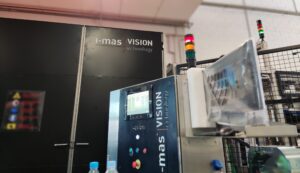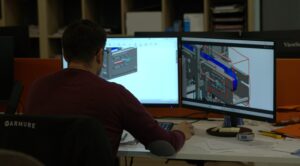Product design goes beyond functionality and aesthetics; it explores the world of emotions, creating authentic connections between users and the products they choose. This approach, known as emotional design, seeks to evoke specific emotional responses, transforming the user experience into something more than a commercial transaction.
The Power of Emotions in Product Design
Designers have recognized that when a product arouses positive emotions, users perceive it not only as a functional tool, but as an element that enhances their experiences. From the thrill of unpacking a product to the everyday satisfaction of using it, every interaction becomes an occasion to cultivate a meaningful emotional connection.
Emotional Design and UX
Leading brands understand the importance of building memorable experiences through emotional design and a and a rewarding user experience (UX).experience (UX). Packaging that conveys warmth, colors that inspire joy or a user interface (UI) that provides visual comfort; all these elements combine to create an emotional narrative that goes beyond the simple utility of the product.
The Psychology of Color and Shape
In emotional design, the choice of color and shape plays a key role. Vibrant colors can awaken energy and enthusiasm, while soft tones can convey tranquility. Curved shapes can evoke feelings of softness and gentleness, while straight lines can communicate stability and confidence. Understanding the psychology behind these choices allows designers to create sensory experiences that resonate with users’ emotions on the one hand, and companies to communicate effectively and strategically on the other.
The User’s Journey
From the first contact with a product to its continued use, emotional design leads the user through a meaningful journey. Initial anticipation, satisfaction with the first experience and the formation of positive memories are key aspects that contribute to long-term loyalty. Brands not only market products, they offer emotions and experiences that are integrated in an essential way in the daily routine of users.
Featured Examples in Emotional Design
- Apple: The elegance and simplicity of Apple products not only represent functionality, but also an aesthetic that arouses emotions of admiration and satisfaction. The experience with Apple products goes beyond utility; it becomes an expression of good taste and refinement.
- Nespresso: From the elegant design of its machines to the presentation of capsules, every detail has been carefully considered to create a unique sensory experience. The brand has managed to turn the simple routine of drinking coffee into an emotionally satisfying ritual.
- IKEA: IKEA designs strike a perfect balance between practicality and aesthetics, creating a warm and welcoming atmosphere in users’ homes. Each piece is not only functional, but also adds an aesthetic dimension that transforms spaces into more pleasant and personal environments.
Influence of i-mas
At i-mas, we believe that emotional design in product design and development is not just a passing trend, but the key to building products that not only satisfy needs, but also enrich the lives of those who choose them. Our mission is to continue to lead at the forefront of emotional design, creating not just products, but experiences that resonate in the hearts and minds of our users.
At i-mas we have taken emotional design to new heights with the design and development of the be-ia true revolution in the field of emotional ultrasound and obstetrics that combines high quality design with innovative technology to completely transform the user experience. We have fused the aesthetic with the emotional by creating lasting emotional connections through a carefully designed interface to cultivate a meaningful emotional experience.
Do you have any project in mind? We want to meet you!



